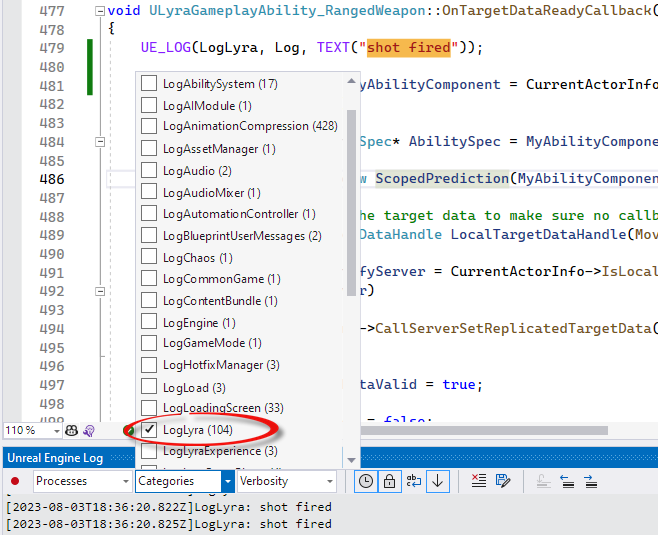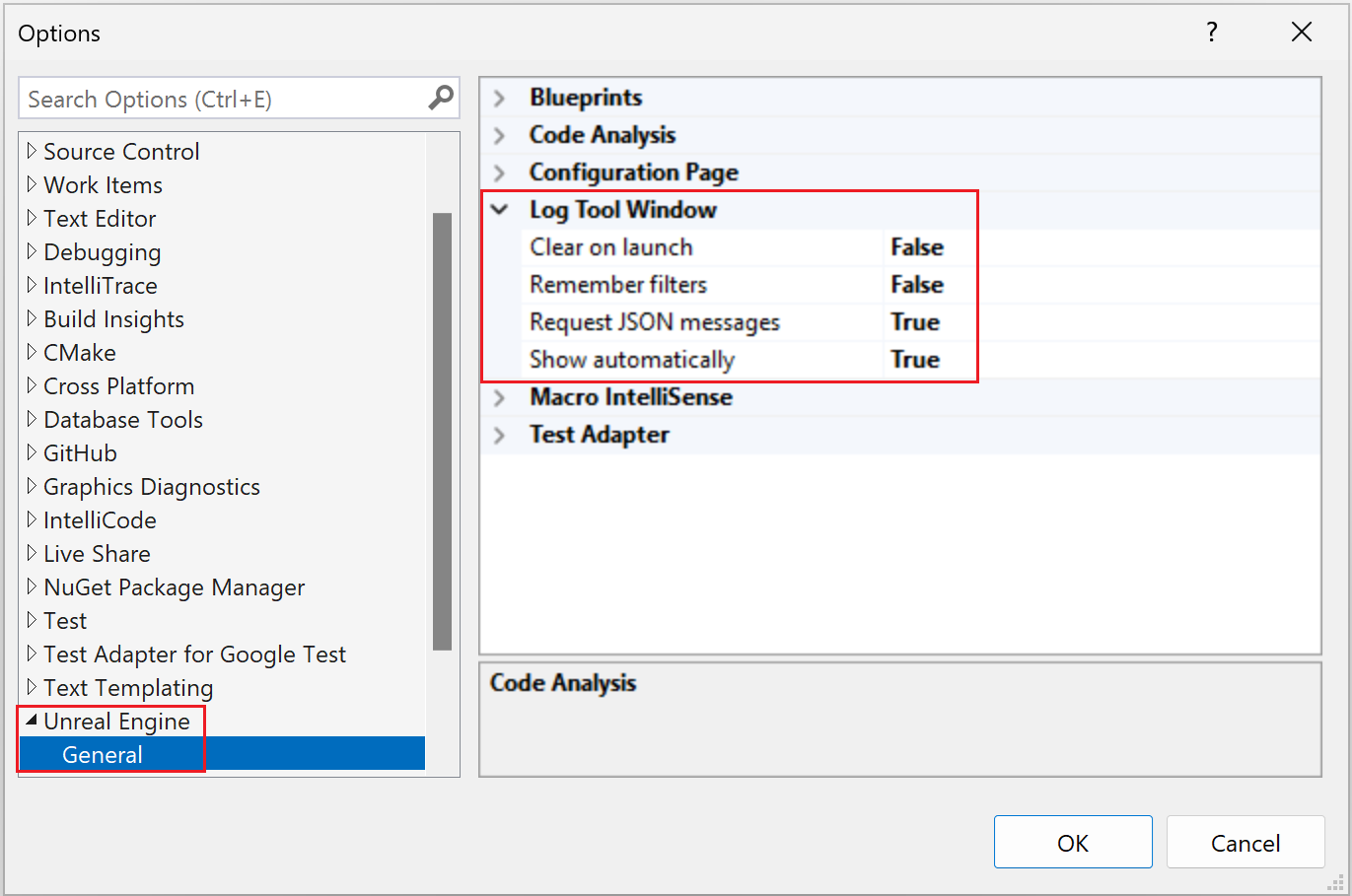View Unreal Engine logging in Visual Studio
Use the Visual Studio Tools for Unreal Engine (UE) to see UE logging within Visual Studio. This is useful because you can see UE logging without having to switch between the Unreal Editor and Visual Studio.
Prerequisites
The following must be installed:
- Visual Studio version 17.10 or later.
- Unreal Engine version 5 or later.
- Visual Studio Tools for Unreal Engine. See Install Visual Studio Tools for Unreal Engine for installation instructions.
- Complete the Quickstart: Visual Studio Tools for Unreal Engine to download and build the Lyra game and configure it to use Visual Studio Tools for Unreal Engine.
Add Unreal Engine logging to a sample and see the results in Visual Studio
After completing the Quickstart: Visual Studio Tools for Unreal Engine to download and build the Lyra game, follow these steps to add Unreal Engine logging to the Lyra game sample and see the log messages in Visual Studio:
In Visual Studio, open
LyraGameplayAbility_RangedWeapon.cpp. Either search for that file in the Search pane of the Solution Explorer, or find it under Games > LyraStarterGame > Source > LyraGame > Weapons > LyraGameplayAbility_RangedWeapon.cpp.In
LyraGameplayAbility_RangedWeapon.cpp, go to line 477. You should see this function:void ULyraGameplayAbility_RangedWeapon::OnTargetDataReadyCallbackInsert the following code at the beginning of the function:
UE_LOG(LogLyra, Log, TEXT("shot fired"));This creates a log entry, associated with the categoryLogLyra, that logsshot firedwhen this function is called.Run the sample game in Visual Studio by choosing Debug > Start Debugging. Give the Unreal Editor a few moments to load the Lyra game.
In Visual Studio, open the UE logging window by choosing View > Other Windows > Unreal Engine Log from the Visual Studio main menu. Or use the UE toolbar button to show the log. For more information about the toolbar, see Unreal Engine toolbar.
In the Unreal Editor, choose the Play button on the toolbar (or
Alt+p) to start the game.In the Lyra game, use the
w,a,s,dkeys to navigate the player left to the Elimination portal. Position the player over the entry portal to load the game.Once the game is running, click the mouse button to fire. This creates some log entries in the
LogLyracategory. NowLogLyrawill appear in the Categories filter for the next step.Reduce log noise by filtering all but the
LogLyracategory events in the UE logging window as follows: choose the Categories dropdown. Choose (Select All) at the top of the list to clear all of the log sources. Then select LogLyra. In the UE logging window, you should see the log message:shot fired:
The events are at the bottom of the log so you might have to scroll down to see them. You could also choose the Clear button to clear the log and then fire again to see the log message.
If you find the font color hard to read, you can adjust it under Tools > Options > Environment > Fonts and Colors. Change the dropdown Show settings for: to Unreal Engine Log. In Display items: select Log and change the Item foreground color to something easier to see for you.
Having the UE logging window open while you're debugging is convenient because you don't have to switch to the Unreal Editor to see them.
Unreal Engine logging options
Starting with Visual Studio 2022 17.12, use Tools > Options > Unreal Engine to configure the Unreal Engine logging window. On the General tab, the following options for the Unreal Engine log window are available under Log Tool Window:

- Clear on Launch: Clear the log window when the game is launched.
- Remember filters: Remember the filters you set in the log window when you close Visual Studio.
- Request JSON messages: Request that log entries in JSON format. JSON provides a structured format that is easy to parse and process programmatically. This makes it simpler to extract specific information from log messages, such as error details, timestamps, and other metadata.
- Show automatically: Show the log window automatically when the game is launched in Visual Studio.
Related content
Visual Studio Tools for Unreal Engine
Add Unreal Engine classes, modules, and plugins in Visual Studio
View Unreal Engine Blueprints in Visual Studio
View Unreal Engine logging in Visual Studio
View Unreal Engine macros in Visual Studio